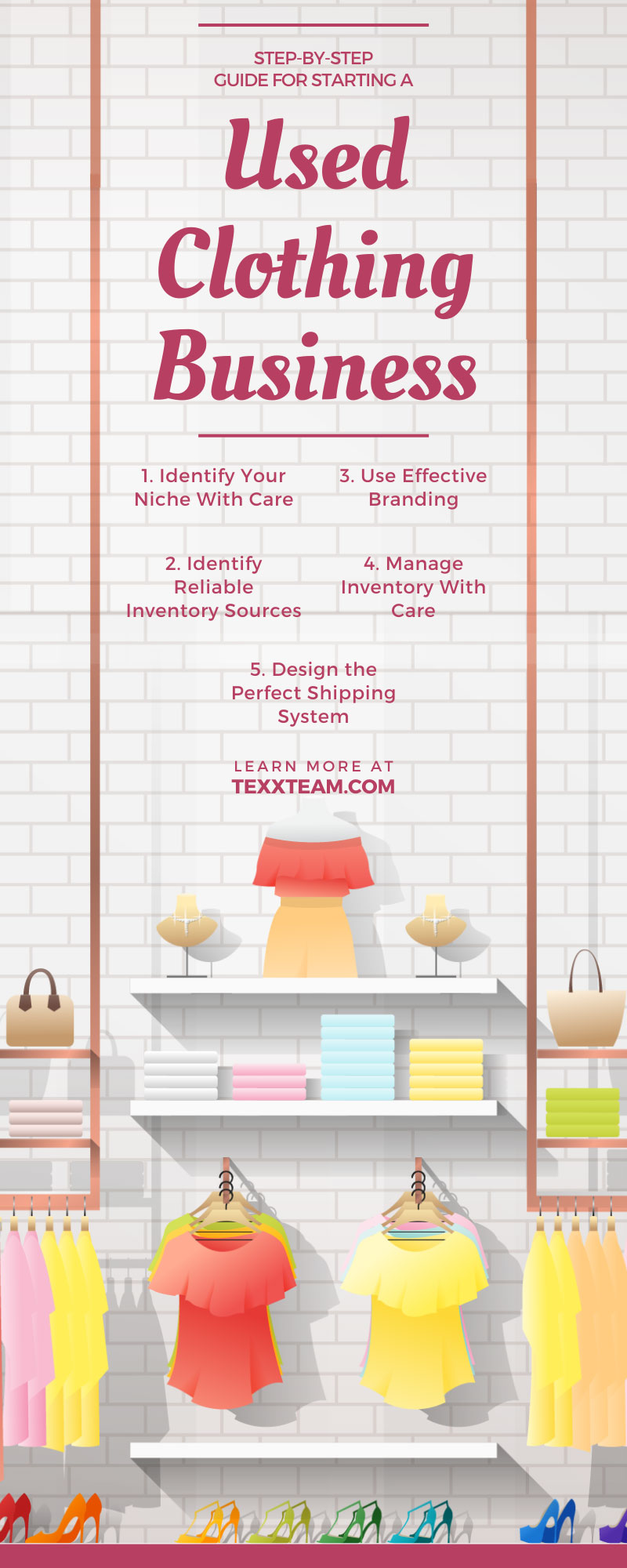Starting a new business is always an exciting event. Some of the best ideas for businesses focus on giving customers a great deal on items they need. One type of good that is consistently required is clothing, and used clothing stores are always able to offer the best deals. What’s more, starting up a clothing business is one of the most straightforward and accessible forms a startup retail business can take. Explore this fantastic entrepreneurship opportunity with our step-by-step guide for starting a used clothing business.
Identify Your Niche With Care
While it’s true that clothing is a niche itself, it’s much too broad in most cases. Selling all used clothing will quickly get out of hand as the available inventory grows exponentially. Unless the business has a large, planned location, an extensive and overly diversified list may become difficult to manage. What’s more, too broad a niche makes it very difficult to attract loyal repeat customers. Many people will likely find it challenging to navigate past the items they don’t want and find the one or two items they might love. As your business grows, customers will ask for different things outside of your business’s current focus. When this happens, it’s time to consider branching out to items less related to your niche category.
Until then, consider clothing the category and get more specific. What will the new business specialize in? Under the umbrella of clothing, there are many more specific areas to focus on, such as athletic wear, children’s clothing, seasonal weather gear, and more. The more a business can specialize early on, the better the chances of new customers recognizing it as a reliable resource for items they need. Ensure that the chosen niche has different styles and options so that customers still have choices and enjoy browsing. The goal is not to narrow down your selection so much that the store is uninteresting but instead to avoid becoming cluttered or overwhelming with too much variety.
Identify Reliable Inventory Sources
While determining your niche is an integral part of the step-by-step guide for starting a used clothing business, seeking potential inventory sources is equally important. It does no good to decide on what seems like the perfect niche only to find it impossible to keep the shelves well-stocked. Fortunately, there are many ways to replenish your business’s stock of used items regularly, granted the items needed aren’t especially rare or collectible. For instance, choosing to focus on limited edition or unique release t-shirts may be significantly trickier, as these are harder to source than an item like wholesale used jeans.
While both used collector’s editions of clothing and a good pair of jeans are equally desirable and will make a profit, it’s consistency that matters most. It doesn’t matter if some items sell for much higher prices than others if your business can hardly ever purchase them for a reasonable price in the first place. Part of the work of choosing your niche is a careful assessment of the availability of potential goods. It’s essential to begin the business with confidence that you can always source affordable used clothing within your niche. That availability previously noted wasn’t a fluke or coincidental surge. The best way to ensure your shelves stay stocked is to locate a local or international wholesaler to provide you with a steady selection.
Use Effective Branding
The average customer has few choices when it comes to buying clothes. As a business owner, it’s your job to show customers why ultimately, your store is the best choice. Running a business is so much more than setting up a shop and waiting for people to come along. It takes hard work and passion to prove yourself to the world’s new and increasingly savvy shoppers. Sometimes, even offering the lowest prices or best deals isn’t enough. Today’s shopper wants more than a difference in price tags, although being competitive certainly doesn’t hurt. Most of all, the modern individual wants to feel connected to the choices they make. Hard sells and cold pushes to spend money aren’t effective anymore and will likely drive away would-be buyers.
Instead, every business needs to develop a brand image that should evolve and grow with its demographic’s interests. How you envision your brand should closely reflect the goals and interests of your target audience. For example, if the business primarily sells used men’s dress shirts and appropriate attire, it wouldn’t make sense to design brand elements with a boutique theme. Every business needs an effective logo, visual design in the store and site, and a culture that’s cohesive with the customers’ needs. Finally, it helps to communicate via social media and other avenues, using a consistent voice that likewise matches your business’s offerings.
Manage Inventory With Care
An inventory well-stocked with used clothing is one of the more difficult items to store and keep track of properly. How this is accomplished ultimately comes down to the availability of space. Covered clothes racks might be best for businesses with a lot of floor space available and inventory that moves quickly. For everyone else, shelves and boxes are the next best bet. Designing an effective sorting system isn’t easy, but it’s a crucial step.
It’s more than a little challenging to keep shelves stocked and meet customer demands when items keep getting lost amidst mountains of clothes and shelves upon shelves of boxes. The best way to sort clothes is to do so in the most intuitive way possible. Start by separating items into essential categories—for instance, group clothes by age, color, and type of clothing. Afterward, organize these items by ascending or descending size. It also helps to single out other key desirable elements such as the manufacturer or unique style elements. Finally, store all items in a cool and dry space, preferably with good airflow. Cloth is especially vulnerable to acquiring musty smells with incorrect storage, so it’s worth the time to get it right.
Design the Perfect Shipping System
The final step to running any successful business is creating a successful plan for shipping and packaging. Even in-store purchases require something for customers to pack their purchases in. What’s more, changes in shopping styles make it practically essential for just about every business to cater more seriously to remote shoppers, so even if it seems like a hassle, it’s worth doing.
There are many more customers potentially interested in your store across an entire planet full of people than there are in just a 10 or 20-mile radius of your physical location, after all. To make shipping as easy as possible, design a quality pick path. A well-organized one consists of a staging area for folding and wrapping clothes and a permanent nearby spot to take prepped items and finish packaging them. Of course, the real key to the process is getting the proper shipping materials wholesale and ensuring they stay stocked up.


